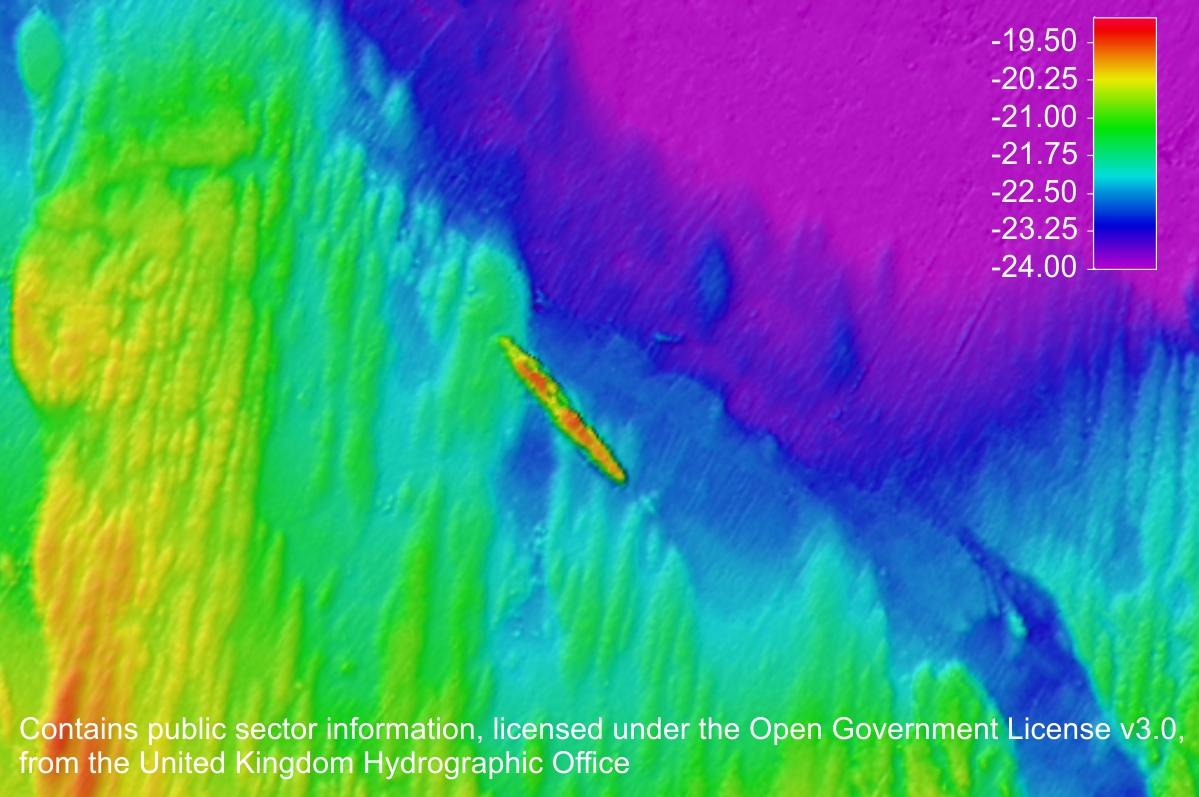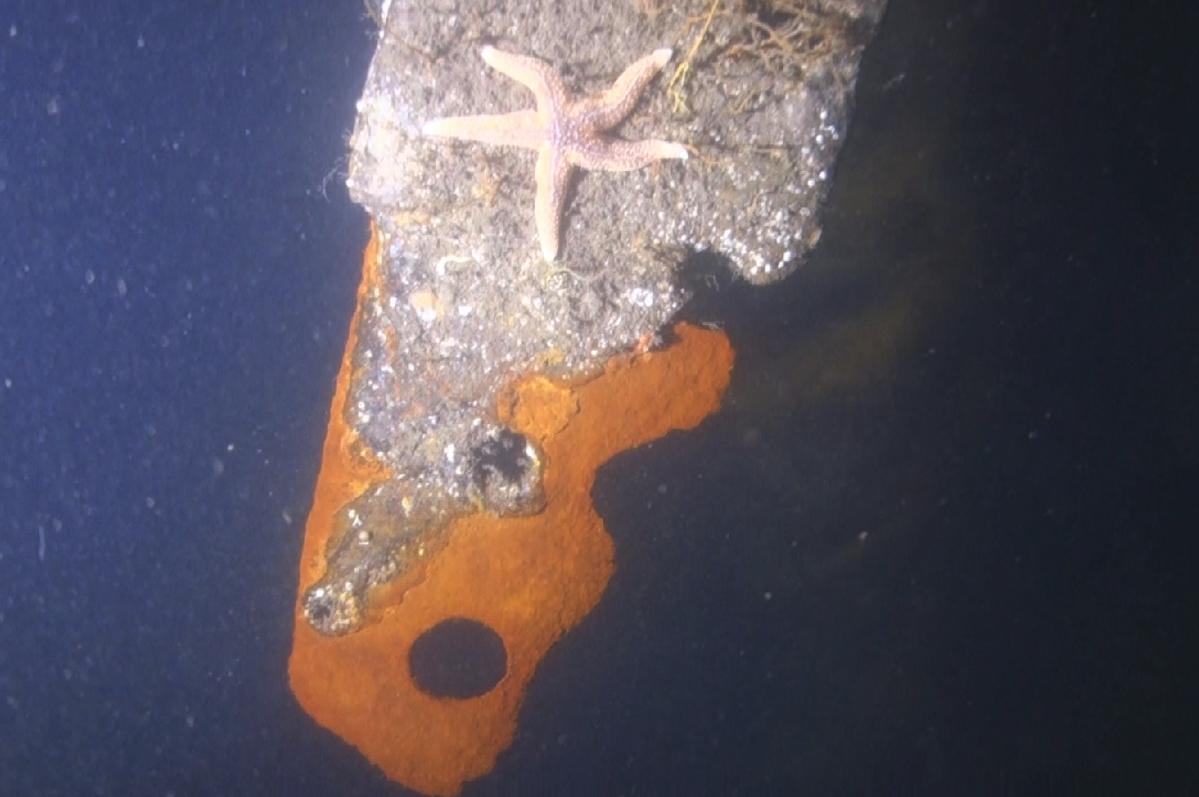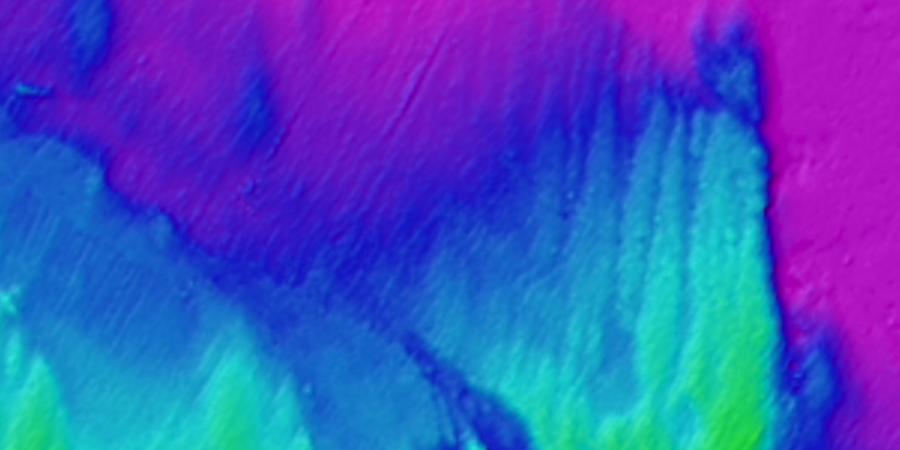Subject to weather, the postponed ROV (underwater robot) diving operations for Historic England on the wreck of the German First World War submarine UB 30 will get underway next week. The survey is being carried out on the 50 metre deep wreck by a team comprising Wessex Archaeology Senior Technical Specialist Graham Scott, ROV pilots from the subsea services company JFD and the Holderness Fishing Industry Group. Graham is a veteran of several First World War submarine wreck investigations and will be posting updates on the progress of the work on the Wessex Archaeology Facebook page.
The UB 30 will be the latest of several submarine wrecks investigated off the Yorkshire coast as part of Historic England’s themed research on the war at sea during 1914−18. The bathymetric image shows the UC 70, a mine laying submarine sunk nearby off Whitby and investigated by Wessex Archaeology in 2016 (the scale on the right of the image gives the depth in metres, less the varying depth added at different states of the tide). The video still shows one of the frames of the cylindrical pressure hull of UB 107, sunk off Bridlington and also investigated by us. The frame is exposed because there is a large hole in the hull at this point. The orange colour is the result of corrosion, a process that is a major factor in causing the gradual collapse and deterioration of all of the 19th- and 20th-century iron and steel wrecks around the UK coast. This decline, which is impractical for us to stop due to the sheer scale of the problem, means that there is a great deal that needs to be done by archaeologists and divers to record the wrecks before they eventually disappear. The amount of work required should not be underestimated − it is as though prehistorians had been told that all of the hillforts in the UK would disappear in the next 20 or 30 years. Fortunately, the strong construction of submarine pressure hulls means that they are less prone to complete collapse as corrosion progresses and many are still partially intact.


As usual, we are benefiting from the investigations carried out on these submarines since the 1970s by recreational divers and we actively seek information from them in return for full acknowledgement and, where possible, participation in our surveys. As well as being published in the form of archaeological reports, the data from our work is archived at the National Record of the Historic Environment. This helps ensure that more of the information gathered by those divers is preserved as a permanent public record.
By Graham Scott, Senior Maritime Technical Specialist and Dive Superintendent
